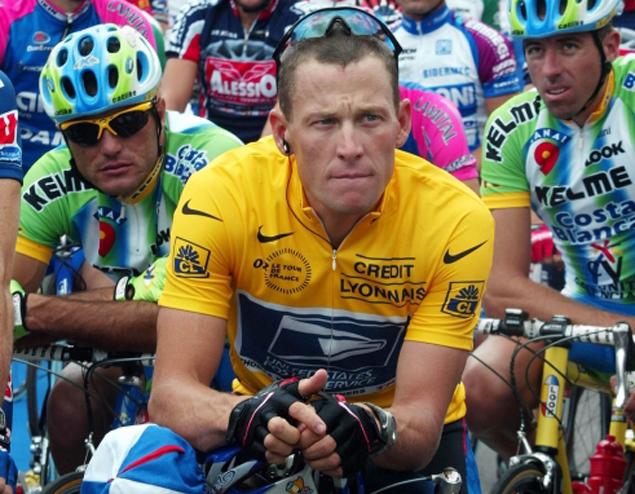Sports Saturday
Yesterday I applied the Earl of Rochester’s misanthropic masterpiece “Satyr vs. Reason and Mankind” to America’s gun control battles and noted that the poet understands how deeply fear can twist the reasoning process. Since the poem is so good at identifying the dark sides of humanity, I decided to apply it today to Lance Armstrong.
As you may have heard, Armstrong has finally admitted, on Oprah Winfrey’s show, to doping and bullying. His confession did not out of any desire to come clean. Rather, he is attempting to limit the damag: he’s facing a lifelong ban on any kind of competition and is also is vulnerable to damage claims from those he wronged.
We’re hardened to doping stories these days, so much so that no one was surprised that two of baseball’s all-time greats, Barry Bonds and Roger Clemens, failed to make it into the Hall of Fame this year because of their steroid use. (In fact, no one was elected.) What stands out about Armstrong, however, is the elaborate lengths he went to, both to hide his own doping and to keep anyone else from exposing him or ratting him out. He threatened to end people’s careers and he sued anyone who made claims against him. As the U. S. Anti-Doping Agency declared, Armstrong headed “the most sophisticated, professionalized and successful doping program that sport has ever seen.” Rochester would label him a “knave of the first rate.”
This is in contrast to, say, Barry Bonds, who by Rochester’s standards I would call a second-rate knave. I find myself sympathizing with Bonds. Although he is arguably the greatest hitter in the history of the game, when he should have been having his time in the sun he was eclipsed by two dopers, Mark McGwire and Sammy Sosa, who in 1998 gobbled up the headlines with the famous homerun race of 1998.
One should think about Bonds’ decision to start doping against that backdrop. Honesty, to use Rochester’s words, would have been “against all common sense.” If lesser players were surpassing him and if Major League Baseball was turning a blind eye, he would be a fool to “play upon the square.” After all, “Men must be knaves, ’tis in their own defense”:
And honesty’s against all common sense:
Men must be knaves, ’tis in their own defence.
Mankind’s dishonest; if you think it fair
Among known cheats to play upon the square,
You’ll be undone.
Nor can weak truth your reputation save:
The knaves will all agree to call you knave.
Wronged shall he live, insulted o’er, oppressed,
Who dares be less a villain than the rest.
Rochester has it right as far as Bonds is concerned. Even if he hadn’t doped—even if he had stayed clean and relied on “weak truth”–there is a chance that he would have been suspected of having doped. Mike Piazza, one of baseball’s greatest hitting catchers, didn’t make it into the Hall of Fame simply because people thought he might have taken drugs, even though there’s no proof. Everyone who flourished during “the steroid era” is suspect.
And then, of course, there are those innocents who might have stayed in baseball (or in cycling) had they only doped. “Wronged shall he live, insulted o’er, oppressed/Who dares be less a villain than the rest.”
In Rochester the difference is between not who’s innocent and who’s guilty but who is more guilty and who is less:
Thus sir, you see what human nature craves:
Most men are cowards, all men should be knaves.
The difference lies, as far as I can see,
Not in the thing itself, but the degree,
And all the subject matter of debate
Is only: Who’s a knave of the first rate?
So forget about absolute innocence. Bonds and Clemens had Hall of Fame careers before they turned to steroids, succumbing only when dopers started surpassing them.
But as far as who’s a knave of the first rate: for his pervasive doping and, even more, for his ruthless bullying, the award goes to…Armstrong!


